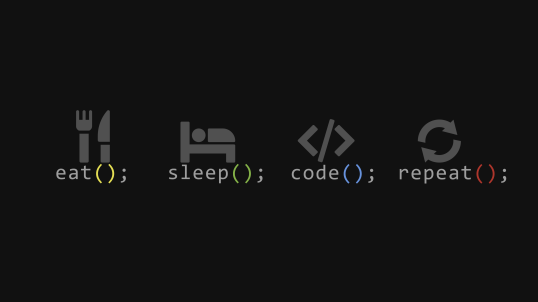About Detecting All Cycles in a Graph
Problem
주어진 무방향 그래프에 대하여, 그래프에 속하는 모든 사이클 을 출력한다.
Approach
그래프 컬러링 방법을 이용하여, 모든 서로 다른 사이클들 에 고유한 숫자들을 부여한다.
그래프 탐색이 끝나면, 모든 비슷한 숫자들을 인접 리스트 에 넣고 출력한다.
Procedural steps
- 모든 에지들을 인접 리스트에 넣는다.
- dfs cycle detection 함수를 호출한다.(임의의 정점으로 부터)
- 만약 이미 한번 방문된 정점이면, 현재 방문한 정점의 부모 정점으로 부터, 현재 방문한 정점이 나올 때 까지 백트랙 하면서, 백트랙하는 정점들을 사이클 리스트 에 넣는다.
- all cycle detection 이 끝나면, 사이클들을 출력한다.
Pseudo code
allCycleDectection(u, parentVertex, parents, visits, cycles) {
cycleNumber;
이미 탐색이 모두 끝난 정점이라면 -> 함수 종료;
이미 한번 방문한 정점이라면 {
increase cycleNumber;
while backtracking from parentVertex {
put vertices into cycle list
return
}
아니면 {
현재 정점u의 부모 정점 = parentVertex;
현재 정점u의 visits = 1;
for 현재 정점의 인접한 정점 v에 대해 {
만약 v가 u의 부모 정점이라면 -> 다음 정점으로
아니면 u를 부모로하는 allCycleDetection();
}
현재 정점 u의 visits = 2;
}
Geeks for Geeks example
graph = [[] for i in range(N)]
cycles = [[] for i in range(N)]
# Function to mark the vertex with
# different colors for different cycles
def dfs_cycle(u, p, color: list,
mark: list, par: list):
global cyclenumber
# already (completely) visited vertex.
if color[u] == 2:
return
# seen vertex, but was not
# completely visited -> cycle detected.
# backtrack based on parents to
# find the complete cycle.
if color[u] == 1:
cyclenumber += 1
cur = p
mark[cur] = cyclenumber
# backtrack the vertex which are
# in the current cycle thats found
while cur != u:
cur = par[cur]
mark[cur] = cyclenumber
return
par[u] = p
# partially visited.
color[u] = 1
# simple dfs on graph
for v in graph[u]:
# if it has not been visited previously
if v == par[u]:
continue
dfs_cycle(v, u, color, mark, par)
# completely visited.
color[u] = 2
# add the edges to the graph
def addEdge(u, v):
graph[u].append(v)
graph[v].append(u)
# Function to print the cycles
def printCycles(edges, mark: list):
# push the edges that into the
# cycle adjacency list
for i in range(1, edges + 1):
if mark[i] != 0:
cycles[mark[i]].append(i)
# print all the vertex with same cycle
for i in range(1, cyclenumber + 1):
# Print the i-th cycle
print("Cycle Number %d:" % i, end = " ")
for x in cycles[i]:
print(x, end = " ")
print()
# Driver Code
if __name__ == "__main__":
# add edges
addEdge(1, 2)
addEdge(2, 3)
addEdge(3, 4)
addEdge(4, 6)
addEdge(4, 7)
addEdge(5, 6)
addEdge(3, 5)
addEdge(7, 8)
addEdge(6, 10)
addEdge(5, 9)
addEdge(10, 11)
addEdge(11, 12)
addEdge(11, 13)
addEdge(12, 13)
# arrays required to color the
# graph, store the parent of node
color = [0] * N
par = [0] * N
# mark with unique numbers
mark = [0] * N
# store the numbers of cycle
cyclenumber = 0
edges = 13
# call DFS to mark the cycles
dfs_cycle(1, 0, color, mark, par)
# function to print the cycles
printCycles(edges, mark)
Print all the cycles in an undirected graph - GeeksforGeeks
Time Complexity
O(N+M): N = number of vertices, M = number of edges
Space Complexity
O(N+M)
